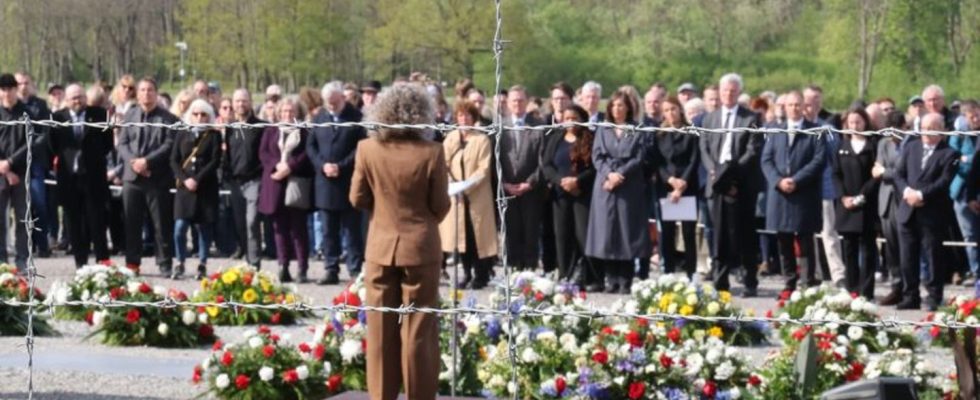memorial
Commemoration of the victims of the Nazi concentration camp Buchenwald
Commemorative ceremony on the former roll call area on the occasion of the 79th anniversary of the liberation of the Buchenwald concentration camp. photo
© Bodo Schackow/dpa
79 years ago, the Nazi concentration camp Buchenwald near Weimar was liberated by US troops. Former prisoners also returned to the place of violence, death and horror for the memorial service.
The Buchenwald concentration camp memorial near Weimar commemorates the tens of thousands of victims of the National Socialist concentration camp and the liberation of the camp 79 years ago. Thuringia’s Prime Minister Bodo Ramelow (Left), the President of the International Committee, came to the memorial service on Sunday Buchenwald-Dora and commandos, Naftali Fürst, and other survivors. They had survived the place of Nazi violence, death and horror as children and young people. The Buchenwald concentration camp was liberated by the US Army on April 11, 1945.
Even before the commemoration, Ramelow had recalled the crimes against humanity committed by the National Socialists in Buchenwald and its subcamps. A total of 139 subcamps served as an instrument of forced labor. The dehumanization of forced laborers is unprecedented to this day, explained Ramelow. “A hideous reality that must never be forgotten and will never fade.”
Eleven camp survivors expected
The focus of the commemoration this year was the memory of forced labor under National Socialism. According to the memorial foundation, a total of eleven camp survivors from Israel, Belarus, France, Poland, Romania, the USA and Germany are expected to attend the various events in Buchenwald, the former Mittelbau-Dora concentration camp memorial near Nordhausen and in the subcamps.
By 1945, the National Socialists had deported more than a quarter of a million people from 50 countries to the Buchenwald camp near Weimar and its subcamps, which were set up in 1937. 56,000 people were murdered or died from hunger, disease, forced labor or medical experiments.
21,000 prisoners experienced the liberation
When US troops reached the camp on April 11, 1945, the SS commanders and guards had already left and armed prisoners from the illegal camp resistance had taken control. 21,000 prisoners experienced the liberation; tens of thousands had recently been driven on so-called death marches by the SS.

